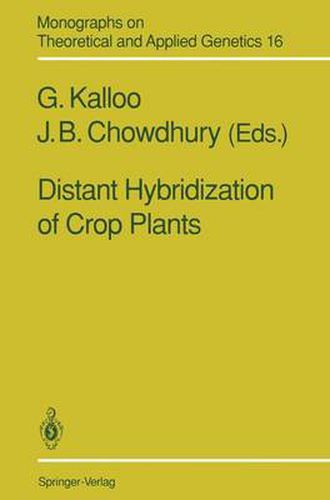Readings Newsletter
Become a Readings Member to make your shopping experience even easier.
Sign in or sign up for free!
You’re not far away from qualifying for FREE standard shipping within Australia
You’ve qualified for FREE standard shipping within Australia
The cart is loading…






This title is printed to order. This book may have been self-published. If so, we cannot guarantee the quality of the content. In the main most books will have gone through the editing process however some may not. We therefore suggest that you be aware of this before ordering this book. If in doubt check either the author or publisher’s details as we are unable to accept any returns unless they are faulty. Please contact us if you have any questions.
Wild taxa are invaluable sources of resistance to diseases, insects/ pests, nematodes, temperature extremes, salinity and alkalinity stresses, and also of nutritional quality; adaptation; genetic diversity and new species. Utilization of wild relatives of a crop depends largely upon its crossability relations with cultivated varieties. Sev eral wild species are not crossable with the commercial cultivars due to various isolation barriers. Furthermore, in a few cases, hybridiza tion is possible only in one direction and reciprocal crosses are not successful, thus depriving the utilization of desired cytoplasm of many species. However, techniques have been developed to over come many barriers and hybrid plants are produced. New crop species have been developed by overcoming the F 1 sterility and producing amphidiploids and such crops are commercially being grown in the field. The segregation pattern ofF 1 hybrids produced by distant hybridization in segregating generations are different from the intervarietal hybrids. In former cases, generally, unidirectional segregation takes place in early generations and accordingly, selec tion procedures are adopted. In most of the cases, backcross or modified backcross methods have been followed to utilize wild species, and thus numerous types of resistance and other economical attributes have been transferred in the recurrent parents. Protoplast fusion has been amply demonstrated in a number of cases where sexual hybridization was not possible and, as a result, hybrids have been produced.
$9.00 standard shipping within Australia
FREE standard shipping within Australia for orders over $100.00
Express & International shipping calculated at checkout
This title is printed to order. This book may have been self-published. If so, we cannot guarantee the quality of the content. In the main most books will have gone through the editing process however some may not. We therefore suggest that you be aware of this before ordering this book. If in doubt check either the author or publisher’s details as we are unable to accept any returns unless they are faulty. Please contact us if you have any questions.
Wild taxa are invaluable sources of resistance to diseases, insects/ pests, nematodes, temperature extremes, salinity and alkalinity stresses, and also of nutritional quality; adaptation; genetic diversity and new species. Utilization of wild relatives of a crop depends largely upon its crossability relations with cultivated varieties. Sev eral wild species are not crossable with the commercial cultivars due to various isolation barriers. Furthermore, in a few cases, hybridiza tion is possible only in one direction and reciprocal crosses are not successful, thus depriving the utilization of desired cytoplasm of many species. However, techniques have been developed to over come many barriers and hybrid plants are produced. New crop species have been developed by overcoming the F 1 sterility and producing amphidiploids and such crops are commercially being grown in the field. The segregation pattern ofF 1 hybrids produced by distant hybridization in segregating generations are different from the intervarietal hybrids. In former cases, generally, unidirectional segregation takes place in early generations and accordingly, selec tion procedures are adopted. In most of the cases, backcross or modified backcross methods have been followed to utilize wild species, and thus numerous types of resistance and other economical attributes have been transferred in the recurrent parents. Protoplast fusion has been amply demonstrated in a number of cases where sexual hybridization was not possible and, as a result, hybrids have been produced.